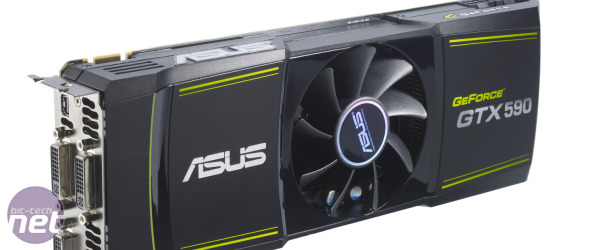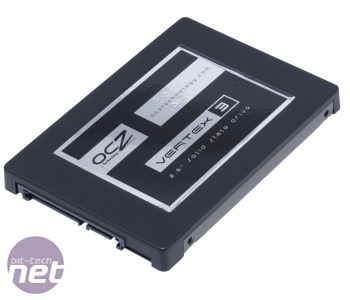PC Hardware Buyer's Guide July 2011
July 11, 2011 | 08:28

Premium Player July 2011
When only the best will do, there’s a great choice of hardware out there to cater for your needs, providing premium performance for a premium price tag. However, even with a high budget, we’re not out to waste money - building a top-end system isn’t as simple as just buying the most expensive components out there and slinging them all together. If you’ve just bought that 30in monitor or triple monitor setup, surround sound speaker kit and nice comfy leather chair with footrest (or sub as it's also known) and are looking for some kick-ass performance that won't wait for anyone, this is what we consider the very best hardware at the moment.| Premium Player | |||
| Product | UK Price (inc VAT) | US Price (ex tax) | |
| CPU | Intel Core i7-2600K | £240 | $320 |
| Motherboard | Asus Maximus IV Gene-Z | £145 | $180 |
| Memory | 8GB 1,600MHz DDR3 | £60 | $85 |
| Graphics Card | Nvidia GeForce GTX 590 3GB | £600 | $750 |
| PSU | XFX Black Edition P1-750B-NLG9 | £90 | $130 |
| CPU Cooler (UK) | Be Quiet! Dark Rock Pro | £50 | - |
| CPU Cooler (US) | Thermaltake Frio | - | $60 |
| Case | SilverStone FT02B | £200 | $250 |
| Optical drive | SATA DVD-RW | £15 | $20 |
| Storage (HDD) | 2 x 2TB Western Digital Caviar Black | £220 | $300 |
| Storage (SSD) | OCZ Vertex 3 240GB | £395 | $600 |
| Sound Card | Asus Xonar DX | £55 | $90 |
| Overall Price: | £2,070 | $2,785 | |
New This Month
The headline change to the spec of our premium player rig this month is the fact that we’ve removed the Asus P8P67 motherboard and replaced it with the Asus Maximus IV Gene-Z. If this has made you do a double take then don’t worry, you’re not going mad, we’ve not actually published our review of the Gene-Z yet. We have finished our testing of the board though and we’ve been so excited by the numbers we’ve seen from it that we simply had to pop it in the rig; it seemed silly to leave it out just because the review will be published a few of days after this guide.Needless to say it’s inclusion here and our excitement about it means you can probably tell it gets a pretty good review. If you want to see just how good though we’d suggest checking back to the site over the course of this week as we should finish writing the review soon and it’ll go straight up on bit-tech when we do.
As we said on the first page of the guide, we’ve seen a lot of activity in the SSD market of late and only one of the drives we’ve seen recently showed the kind of insane speed that means it deserves a place in our premium player rig - the OCZ Vertex 3. It may cost a proverbial pound of flesh but it’s the fastest drive out there, especially when it comes to easily compressible data, and with 240GB of storage available it should be big enough for your Windows 7 install and all your games too.

We know many of you may opt to water cool a rig like this (check out some of our tips in the 'and the rest' section below if you are) but for those who don’t want to get their fingers wet then we’re going to add the Be Quitet! Dark Rock Pro to this build. It replaces the Thermaltake Frio as it runs quieter but offers just as much cooling. Unfortunately for those in the US the Dark Rock Pro isn’t available there yet so you’ll be sticking with the, still awesome, Frio.
And The Rest
For the CPU at the centre of this build we’re opting for the Intel i7-2600K which belongs to Intel’s LGA1155 family of processors. This may be something of a contentious choice as Intel’s LGA1366 range of processors are technically supposed to cater for the extreme top end of the market but we’ve found the i7-2600K to be more than a match for processors even three times its price.The i7-2600K beat the £750 LGA1366 i7-980X by a solid 80 points in our Media Benchmark suite at stock speeds for example, and this lead only increased when we overclocked the two processors too. Gaming also tends to favour the LGA1155 processor thanks to its high IPC architecture. Obviously the i7-980X pulls ahead in heavily multi-threaded applications thanks to its two extra cores, and if these kinds of applications are your bread and butter then you’d be better off with an LGA1366 system. For everyone else though, even those looking to put a top end system together, the i7-2600K reigns supreme.
When it comes to RAM we’re still opting for 1,600MHz modules but we’ve gone for a touch of luxury here and dropped in a full 8GB as opposed to the 4GB we use in the other systems in this guide. The good thing about LGA1155 based systems is that you don’t have to worry about memory straps and Base Clock ratios when overclocking, as nearly all adjustments are is carried out via the CPU multiplier.

Powering the undoubtedly huge display (or group of displays) that you’d hook up to this rig is the Nvidia GeForce GTX 590 3GB. This could cause some raised eyebrows as a GTX 580 1.5GB can still play most games comfortably on a 30 inch screen; arguably the GTX 590 3GB is overkill. Having said this, we’ve had a few requests that our Premium Player build becomes a little more, well, premium so the GTX 590 3GB gets the nod. It also has the benefit of offering a greater amount of future proofing than the GTX 580 1.5GB and with big game releases such as Battlefield 3 and The Elder Scrolls V: Skyrim on the horizon, we’d prefer to know we’ll be able to play them at their highest settings. Just remember that all multi-GPU setups are slaves to their drivers and to update them regularly.
All this lovely expensive kit is housed in the arrestingly beautiful SilverStone FT02R-W which, as a bonus, is also ace at cooling even a monster PC. This is due to a combination of the excellent Air Penetrator fans the case uses and its quirky rotated motherboard tray, a feature which is sure to make your killer PC a talking point. You should note that we’ve recommended the black version of the case, as this is available worldwide. If you’d like to get a hold of the limited edition version of the case with the red interior that we reviewed then look out for the R-W suffix in the listing.
With the Premium Player PC though there is always talk of water cooling and if you want to go down that route then we’d recommend swapping out the FT02 for the gigantic SilverStone Temjin TJ07. You’ll need to stump up some extra cash for your block, tubing, radiator, reservoir and pump too, though we’ve not done enough testing recently to recommend specific products in these areas. If you need advice in this area though you can always check out our watercooling 101 and 201 features and ask in the forums.
Providing the oodles and oodles of storage are a pair of 2TB Western Digital Caviar Black disks. This may seem excessive on the face of it but anyone building this sort of rig is likely to be a heavy PC user meaning they’ve likely built up a large library of both games and media.
Splitting your collection over two disks also reduces the risk of losing everything in the case of disk failure too. If you think this kind of storage is overkill, then feel free to drop back down to a single disk. Just don’t come crying to us in a year’s time when it’s all full up.
On the PSU side of things our sister mag Custom PC recommends the 750W XFX Black Edition P1-750B-NLG9 which won its Premium Grade award for its price and performance, rather than its name. To quote the review: 'at just over £100, the 750W XFX Black Edition is great value for money. If you're in the market for a 700-799W PSU then it should be at the top of your shopping list.'.
We’ve also added an Asus Xonar DX sound card to avoid conflicts with the Realtek audio codec of the motherboard and enhance the sound generally. To round things off, there’s a cheap SATA DVD drive. If you haven't got a copy already, you should factor in a copy of Windows 7 - if you're confident that you won't be upgrading much, then an OEM copy should be fine, but serial upgraders need the pricier retail version.

MSI MPG Velox 100R Chassis Review
October 14 2021 | 15:04









Want to comment? Please log in.